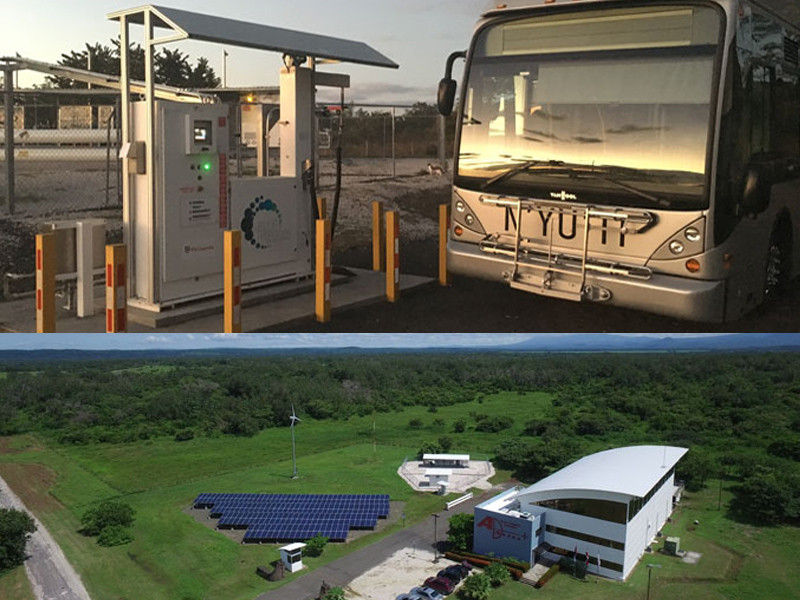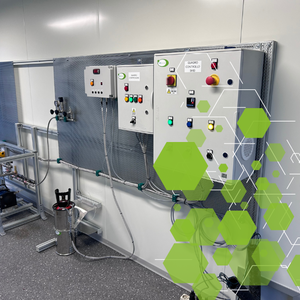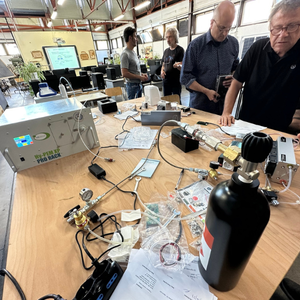Central America's first hydrogen fuel cell bus hits the road
16 / 04 / 2018 • News from the sector

As Costa Rica looks to decarbonize its transportation sector, one company hopes hydrogen technologies will fill a niche with heavy-duty vehicles and energy storage.
Just off a quiet road amid sparsely wooded fields are four rows of solar panels and a single wind turbine. The power they generate is sent a few feet away to a small-scale hydrogen production and storage plant, a cluster of structures and tanks surrounded by a chain-link fence. Next to that is a sleek digital dispenser with a gas-station style hose to deliver the compressed hydrogen to a vehicle.
Specifically, it’s a boxy 35-passenger bus called “Nyuti” (which means “star” in the local Chorotega indigenous language) that sits in the adjacent parking lot. This is Central America’s first hydrogen transportation “ecosystem” and, seven years after the effort to introduce hydrogen fuel cell vehicles in Costa Rica began, Nyuti is taking to the road.
The project is led by Ad Astra Rocket Company, which operates in Houston and Costa Rica. Ad Astra isn’t developing hydrogen technologies, but working with several partners to integrate them in Costa Rica. The aerospace company, founded by former NASA astronaut and Costa Rican native Franklin Chang Díaz, added hydrogen technology to its repertoire in hopes of addressing the greatest obstacle to Costa Rica’s goal of carbon neutrality: transportation
Nyuti is doing test runs between its home base at Ad Astra and a nearby airport. But making the technology work is only the first phase of implementation; Ad Astra now has to determine whether it’s technically and economically feasible to scale up the operation.
“We believe hydrogen vehicles are especially suited for public transportation or heavy-duty trucks or any type of vehicle that has to be constantly on the move,” such as garbage trucks or cargo vehicles, Del Valle said.
“Eventually,” he added, “hydrogen will play an important role as a means of clean storage of energy so we could use it to expand production of local renewables.”
Full article www.yaleclimateconnections.org



